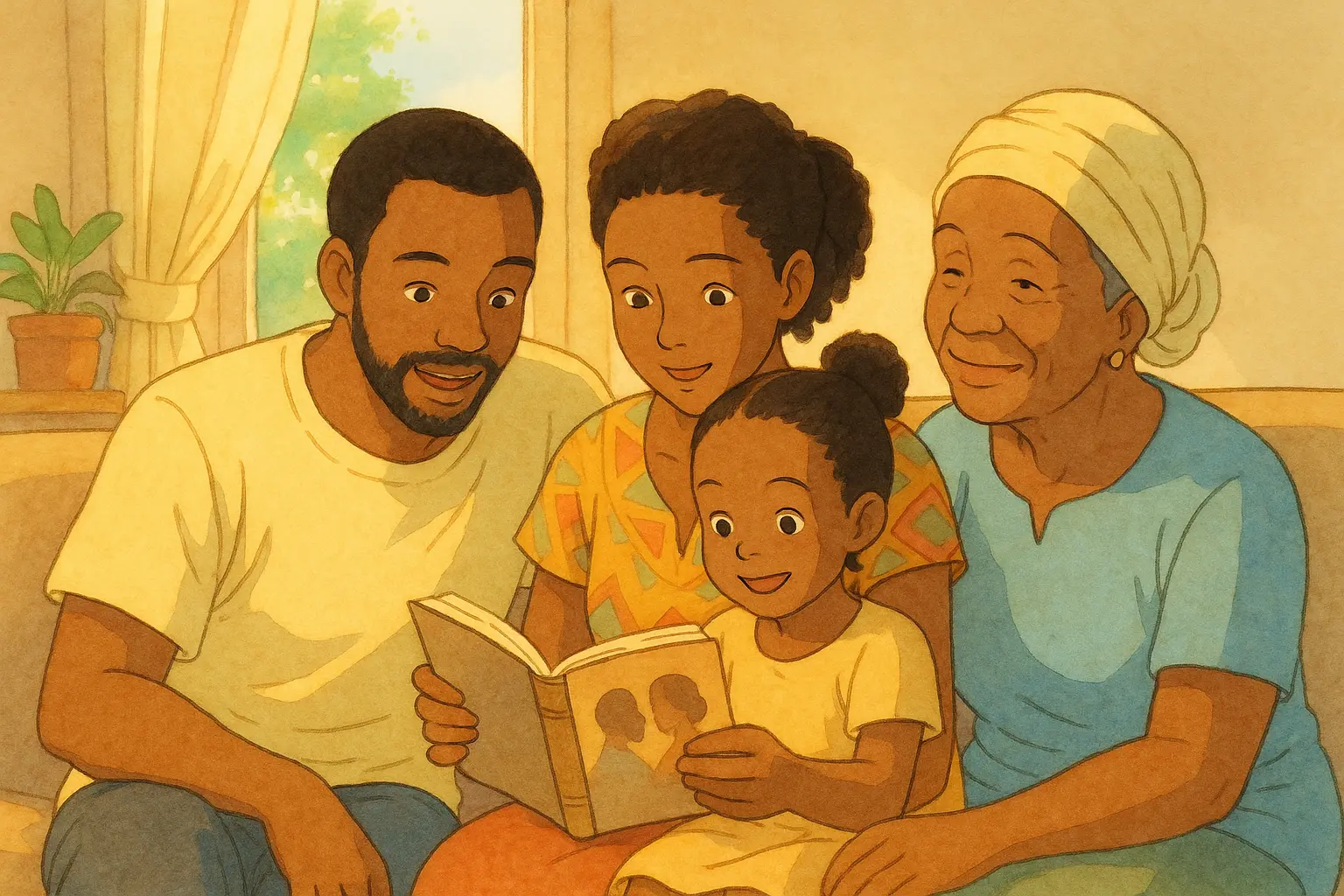By Lionel Kubwimana
••7 min read
Help your partner connect with your culture and language. Simple tips for African diaspora families to build stronger bonds and raise confident, bilingual kids.

Picture this: You're at a family dinner, and your mom starts telling that hilarious story about your childhood in Yoruba. Everyone's laughing, but your partner sits there with a polite smile, completely lost. Sound familiar?
If you're an African parent married to someone who doesn't speak your language, you're not alone. Many of us face this challenge every day. The good news? With some patience and the right approach, you can help your partner connect with your culture while raising kids who are proud of their heritage.
When your partner learns about your culture and language, amazing things happen:
Research shows that kids from multicultural families who see both parents engaged with different cultures tend to be more adaptable and confident. They're also better at problem-solving and connecting with people from different backgrounds.
Your partner might feel awkward when everyone switches to your native language. This is completely normal and happens in most multicultural families.
What you can do:
Children often prefer speaking English, especially as they get older. This can be frustrating, but it's part of growing up in America.
Simple solutions:
Your partner might not understand why certain traditions are important to you. These moments can feel hurtful, but they're actually opportunities to build understanding.
How to handle it:
Food is the easiest way to share culture. Start cooking traditional meals together and explain the stories behind them.
Try this:
Put sticky notes with your language on common household items. This helps both your partner and kids learn without pressure.
Examples:
Watch films from your country with subtitles. This helps your family hear the language naturally while enjoying entertainment together.
Pro tip: Start with comedies or action movies - they're easier to follow even with language barriers.
Play music from your culture during car rides or while doing chores. Music makes language learning fun and memorable.
Ideas:
Tell stories about growing up in your culture. This helps your partner understand your background and gives kids a connection to their heritage.
What to share:
Create new family traditions that blend both backgrounds. This shows kids that all parts of their identity matter.
Examples:
When your partner mispronounces words or misunderstands customs, laugh together instead of getting frustrated. These moments can become sweet family memories.
Kids need to see their mixed identity as a superpower, not a burden.
Ways to build pride:
Your kids will have questions about their identity, especially as they get older. Make sure they feel comfortable asking.
Be ready for questions like:
Answer honestly and positively. Explain that having multiple cultures makes them richer, not more complicated.
The more you push, the more kids might resist. Instead, make your culture naturally part of daily life.
Do this:
Some family members might criticize your partner for not speaking your language or judge your parenting choices. This is hard, but you can manage it.
Strategies:
People might make assumptions about your family or your children's identity. Prepare your kids for these situations.
Teach them to say:
The most important thing is that you and your partner support each other. Your kids need to see you working as a team.
Remember:
When you successfully blend cultures in your home, your children gain incredible advantages:
You don't need to change everything at once. Pick one or two simple strategies and start there.
Building a multicultural family takes work, but it's worth it. Every small step you take helps your children grow into confident, culturally aware adults.
Your partner doesn't need to become fluent in your language overnight. Your kids don't need to choose between cultures. What matters is that everyone feels loved, respected, and proud of who they are.
Start small, be patient, and celebrate the journey. Your family's unique blend of cultures is a gift that will benefit your children for their entire lives.
The most important thing? Keep talking, keep trying, and keep loving each other through the process. That's what makes a family strong, no matter what languages you speak or where you come from.